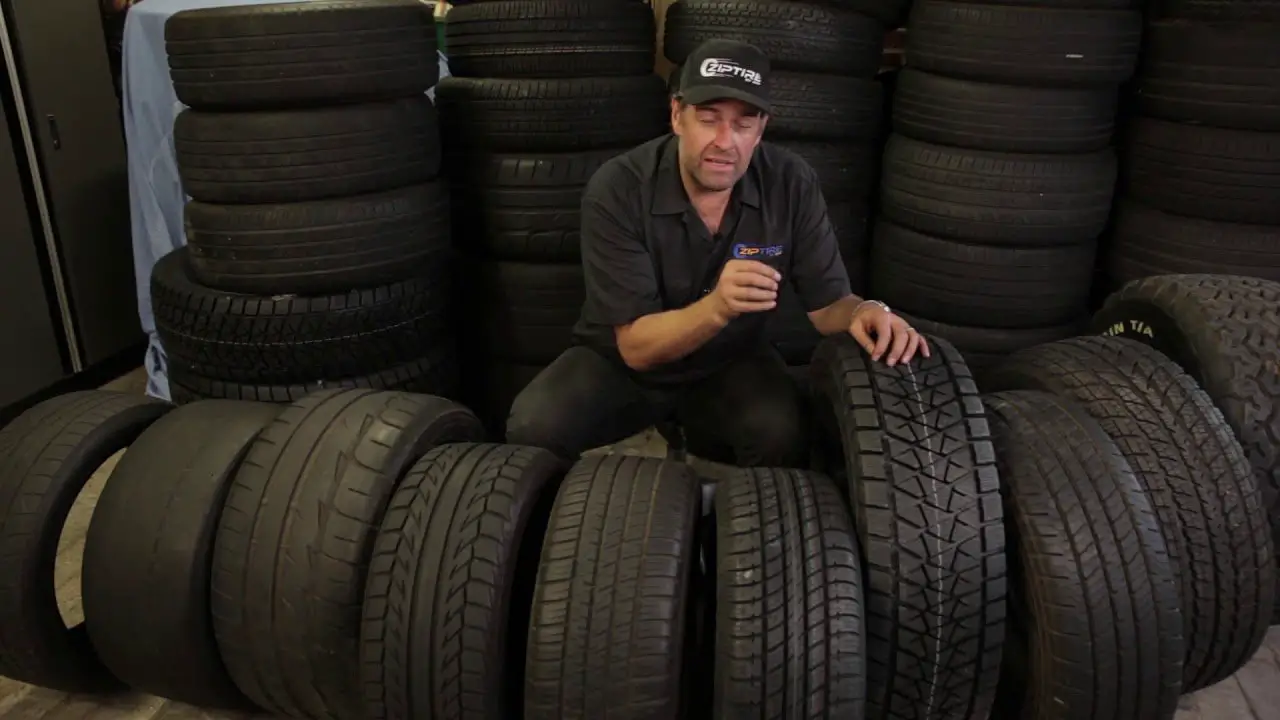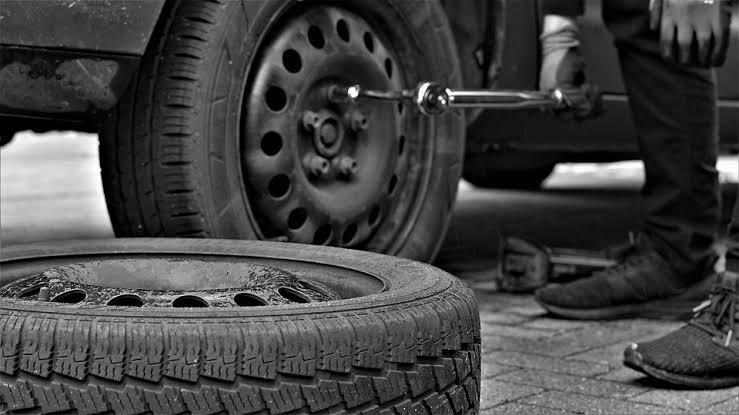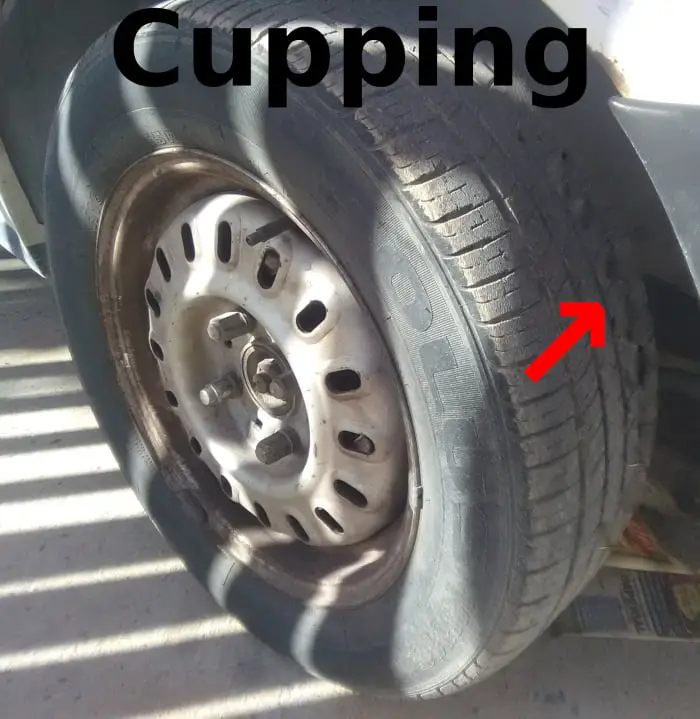Changing Your Air Filter
Your engine air filters should be replaced between 15,000 and 30,000 miles, depending on your driving conditions. If you have a turbocharged engine or drive on unpaved roads, you will likely need to change it more often. Even if you dont drive a lot, your air filter should be replaced every three years as it can become brittle as it ages.
In order to replace your air filter, keep your vehicle on a dry, flat surface and locate the air filter housing and open ityou may need a screwdriver from your household toolkit. Remove the old air filter, along with any debris. Note how the older filter is installed so you can do the same thing when installing the new air filter. Match the direction and placement of the old housing once you install the new filter and you are done.
Winter Tires Or Snow Tires
If you live in a climate where the temperature regularly drops below 45°F/7.2°C or in an area where snow and ice linger for months on end then a set of winter tires, also known as snow tires, is likely a wise choice to get you through the snowy season. Snow tires are specifically engineered to perform in wintery conditions, equipping you the traction, grip and control that summer tires simply arent built to provide. The special rubber compounds in winter tires stay softer and more pliable than summer or all-season tires in frigid conditions, giving you a better grip and superior braking ability.
Another key difference is in winter tires physical design look closely, and youll notice that they feature hundreds of small cuts in the rubber, called sipes, which create tiny edges that provide increased traction by gripping and grabbing wet, icy and snowy roads. Couple those sipes with deep grooves and channels in the tread that are meant to dissipate water, slush and snow, and its clear to see why winter tires provide the utmost traction and peace of mind when frigid conditions arrive.
Raise The Car With The Jack
Underneath your car, there will be specific jack points designed to accommodate the jack. They are usually marked with arrows. Place the jack under the jack point nearest the flat tire and turn the crank to raise the car. Stop as soon as the flat tire is off the ground its not usually necessary or helpful to use the full height of the jack.
Don’t Miss: Who Accepts Carcareone Credit Card
What Type Of Roads
Different usage conditions require different tire characteristics.
For mainly city driving, look for:
- Braking distance: Use tires with the optimum braking distance, on both dry and wet roads.
- Longevity: City driving with its numerous stops and starts puts great demands on the tire. Choose tires with increased longevity.
- Fuel economy: Tires with low rolling resistance save fuel.
tip2 environment 680
For mainly road or highway driving, look for:
- Braking distance at high speed: For maximum safety, select tires that provide optimum braking distance on both dry and wet roads.
- Comfort: For long trips, choose tires that offer comfort both in terms of vibration and noise level.
- Handling: Select tires that provide excellent grip and stability.
If you drive on unpaved roads:
- Look for tires that provide off-road traction and maximum durability.
What Should My Tire Pressure Be

The correct air pressure is determined by car manufacturers and tire makers. You can consult a tire pressure chart usually located in the car’s door jamb or sometimes in the trunk, but always in your owner’s manual to find the right tire pressure for your tires. Tire pressure depends on the type of vehicle you have, the type of tire and the load. You should check your tire pressure regularly, especially before you take any long trips.
Don’t Miss: How To Measure Car Speakers Size
When Changing Your Tire Size Might Be Acceptable
It’s possible to change the size of your tires without actually changing the diameter. One example is if you want larger rims – you can buy tires that compensate for the larger rims by reducing the “height” of the outer tire. This is why the tires of cars with large rims have a much thinner “band” of rubber along the outside of the tire.
Other times you might want to change the size of your tires is when the factory-recommended size is rare and you want to find a more affordable option. Generally, you don’t want to go with tires that have a diameter that is more than 3% different from the factory tires. It’s also a good idea to consult with a trusted mechanic before switching to larger or smaller tires.
Where To Find A Car Tire Size
No matter what vehicle you drive, finding the manufacturer-recommended tire size should be easy. The best place to start looking is the owner’s manual.
Don’t worry if you can’t locate the manual you may also find a tire fit guide in these locations:
- The driver’s side door jamb
- Inside your glove box door
- Within your gas tank hatch
You can also find tire size data on the sidewall of your current tires . However, no matter where you find your tire size, you will have to decipher a sequence of numbers and letters. Don’t worry if it looks confusing at first â every letter and number has a straightforward meaning. Let’s break down how to read car tire size.
Read Also: Who Accepts Synchrony Credit Cards
Why Are These Numbers Important
Obviously, tires have to fit on the wheels, so the width is critical, but less obvious is the effect on various systems in your Toyota. If your car is specified to ride on P225/65R17 tires, changing to P225/55R17 which has smaller sidewalls will throw off your speedometer, which was calibrated based on the diameter of the P225/65R17 tires. Its also important to choose tires with similar or higher load and speed ratings to avoid the risk of a blowout due to under-rated tires.
Finally, getting the speed rating right is important because tires are under extreme stress when rotating at high speeds. The combination of centripetal force and centrifugal force is an important consideration for an engineer who is selecting tire speed ratings.
Shopping for new tires can seem to bring about a bewildering array of numbers and ratings and symbols, but understanding the basics and consulting with your certified Toyota technician will help clear up all confusion.
As the only interface between your Toyota and the road, tires are arguably the most critical wear item on any vehicle. Since each tires contact patch on the road is about the size of your hand, getting the right tire for the job is important.
How Do I Tell Wheel Size
If youre looking to learn the diameter of your stock vehicle wheels sometimes thought of as wheel height, or how tall the wheel is the easiest method is to review your tire size information.
The final number in your tire size denotes both tire and wheel size. In the diagram just below, the size is 17 which translates to 17″. This tire is fitted to a 17″ wheel.
Determining wheel width is a bit trickier. The tire section width, which is the first number in the tire size sequence and expressed in millimeters , hints at the wheel width, but does not give a certain or conclusive answer. This is because any given wheel width can accommodate more than one tire width. A 225 millimeter section width tire, for example, can be fitted to an 8″ or 8.5″ wide wheel.
To determine wheel width and the full specification details of your stock wheels, the dealership service department is often a good resource. Then with the full stock wheel specification in hand you can look for equivalents or close matches.
You May Like: Repairing Cigarette Burns In Car
Extend The Life Of The Vehicle
With a regular schedule, you are able to keep many vehicle problems at bay. When using your car, the last thing you want is for your car to break down, and regular maintenance can help you avoid costly breakdowns. This also keeps your cars value higher, because one of the first things people look for when buying a car is the internal condition.
Youre Our First Priorityevery Time
We believe everyone should be able to make financial decisions with confidence. And while our site doesnt feature every company or financial product available on the market, were proud that the guidance we offer, the information we provide and the tools we create are objective, independent, straightforward and free.
So how do we make money? Our partners compensate us. This may influence which products we review and write about , but it in no way affects our recommendations or advice, which are grounded in thousands of hours of research. Our partners cannot pay us to guarantee favorable reviews of their products or services.Here is a list of our partners.
Don’t Miss: How Much To Register A Car In Ca
Passenger Touring Vehicles: Sedans Cuvs & Minivans
The tires designed for this particular class of vehicles are generally engineered to deliver a smooth and quiet ride, reliable all-season traction, and a long lasting tread life. Luxury vehicles that fall into the passenger touring category can find luxury tire options in both the all-season touring and grand-touring categories. While most cars in this segment will conform to these types of tires, some vehicles are modified for enhanced performance, and will need more performance from their tires.
Tip #: Put It All Together: Understanding What Where & How You Drive

In addition to considering your vehicle type and the climate you typically drive in, think about the type of roads you frequently use and how you like to drive. Are you an avid off-roader that yearns to pioneer new paths? A sports car enthusiast with an itch for speed? A highway commuter that needs to maximize fuel efficiency? Each of these drivers could benefit from a different type of tire, despite their vehicle type. For example:The avid off-roader…needs a tire that can handle dirt, gravel, stone, sand and more, and may want a bigger tire with stiffer sidewalls and a wide tread pattern to help prevent punctures and maintain stability in uneven road conditions.The sports car enthusiast…needs a tire that’s ready for tight turns and quick acceleration, and may want a tire that has high-speed capabilities and special heat-resistant rubber.The highway commuter…needs a tire that’s reliable, comfortable, and efficient, and may opt for a fuel-efficient low rolling resistant tire.Contact an auto care expert at your local Tires Plus for help selecting the tire that’s right for you, or get started by browsing tires that fit your vehicle. Refine your search by brand, price, type, rating, mileage warranty, and more! You’re only a few clicks away from finding the tire that’s perfectly suited for you and your vehicle.
Recommended Reading: Fastest Jdm Car In Forza Horizon 4
Understanding Tire Load Index
Just after the tire size are some more numbers, commonly 100T. The 100 is the tires load index, and in the case of 100, it means by itself a properly inflated tire can hold up 800 kilograms . Four tires can hold 3,200 kilograms, which for many vehicles provides plenty of capacity for holding up the vehicle and anything that might be inside.
With each increase by one, such as 100 to 101, you would increase the load capacity of the tire by 25 kg .
Tip #: Know Your Vehicle Make Model & Tire Size
Whatever your vehicle type, you can guarantee there’s a tire that’s built for it. Narrow your search by only comparing tires that fit your vehicle. Check your owner’s manual for tire recommendations, or use our handy widget to narrow your search by vehicle type. Some drivers choose to replace their tires with tires of the same size, as your owner’s manual likely recommends. Other drivers prefer to upsize or downsize their tires. A driver may select a lower profile tire in order to improve the handling and stability of their car, especially if they drive a smaller vehicle. Other drivers upsize their vehicle’s tires to improve the vehicle’s overall appearance or to maximize the vehicle’s load carrying capacity. Upsizing is most commonly seen on trucks and SUVs. If you’d like to explore the different tire possibilities for your vehicle, give your local Tires Plus a call and talk to one of our certified technicians. They know tires!
Read Also: Average Commision For Car Salesman
Checking For Tire Recalls
The DOT regulates tire production and sales and tracks complaints about brands and tire models. Sometimes, regulations require a manufacturer to recall defective tires and repair or replace them.
Use our research tool to check for any manufacturer recalls on your car. Recall repairs are always free.
Many cars may be subject to a recall at some point in their lives. By law, manufacturers reach out to owners by mail to notify them of recalls. However, they dont necessarily have accurate addresses for everyone.
Locate The Tire Section Width
The section width is the number that comes immediately after the service type in a three-digit number. The section width indicates the tires overall width when it is mounted on a properly-sized wheel. It is measured by the widest point of the inner sidewall to the widest part of the outer sidewall. Wider tires will generally give more traction for the vehicle, but can be heavier and cause more fuel consumption.
Step 1: Read the first set of numbers after the letter. It will be three digits and is a measure of your tires width in millimeters.
For example, if the tire size is P215/55R16, the section width of the tire is 215 millimeters.
Don’t Miss: Who Owns Avis
Tire Pressure And Tread Depth
Since well-maintained tires are integral to a safe, fuel-efficient ride, make it a habit to visually inspect your tires often. Check the pressure in your tires every month, and before long trips or carrying extra load. Donât forget the spare. A tire pressure gauge will be needed to check your tire pressure. Also, during the colder months, note that tire pressure drops one pound with every 10 degree decrease in pressure. Your ownerâs manual will tell you how much air pressure your tire needs. You can check your tread depth using the simple penny method.
How To Choose Tires
What should you think about when choosing a tire?
Once you know what size tires can fit your car, you need to be able to choose among the different types of tires. Tires may look similar, but they can be optimized to perform for very different conditions and usages.
Think about the following things:
Read the rest of our tips to dive deeper into each question.
tip what should i think about when choosing a tire 680
Read Also: How To Keep Squirrels Out Of Your Car Engine
Determine The Service Type
The service type tells you what type of vehicle the tire is manufactured for. For example, some tires are designed for passenger cars, while others are designed for larger trucks. The service type is indicated by the preceding letter on the tire size and is marked on the tires sidewall.
While the service type isnt a measurement, it does help with finding the correct tire size for your car. There are differences that are tied to service type, such as the tread depth and how many plies are used to manufacture the tire, but these numbers arent used in determining the overall tire size.
Step 1: Locate the group of numbers on the side of your tire. The group of numbers is the tire size, indicated in a format such as P215/55R16.
Step 2: Determine the preceding letter on the tire size. In this example, the P is the service type indicator.
The letter tells you what category of vehicle the tire is designed for. Here are the possible letters that you will see for the tire service type:
- P is for a passenger car
- C is for a commercial vehicle
- LT is for light truck
-
T is for a temporary tire or spare tire
-
Note: Some tires dont come with a service type letter. If there isnt a service type letter, this indicates that the tire is Metric size. You will most typically see this type of tire for European cars.
New Tire Buying Guide: Everything You Need To Know

Follow this guide to make the right choice when you’re replacing or upgrading your car’s tires.
Buying new tires can be a daunting experience. You face a bewildering array of brands, sizes and tire types to choose from, so it’s easy to be confused. But don’t worry: this guide will provide you with the essential facts you need to in order to make the right tire choice for your vehicle at the price you want to pay.
Before you buy, you’ll need to know the answers to the following questions:
- What type of tires does my car need?
- How many miles will the tires I’m considering last?
- How much do I want to pay?
- Should I go with a straight replacement set or upgrade my tires?
Already know about tires and just want our top picks? Our favorites in each category are listed below. Further down, you’ll find more information about all-season, summer, and winter tires plus our top alternative picks in each category.
Recommended Reading: How To Notarize A Title In Az
